NATIONAL WATER AND WASTEWATER CONFERENCE
2021
Going Virtual
January 11 – February 3, 2022
Call for Presentations
Hotel and Venue (coming Soon)
NWWC 2025
NWWC Archive
Opening Plenary
January 11
11:00 am – 12:30 pm EST
Our Opening Plenary session will feature an introduction to our webinar series and our platform followed by a discussion between our Executive Director Robert Haller and Member of Parliament for La- Saint-Louis Francis Scarpaleggia.
“All Things Water at the Federal Level” – Robert will chat with Francis about the federal government’s intentions with regard to major water initiatives including: federal coordination on Source Water Protection, the Canada Water Agency, Flood Risk and Drought, Natural Infrastructure, the National Infrastructure Assessment and more.
David Main, AECOM and CWWA President
Francis Scarpaleggia, Member of Parliament
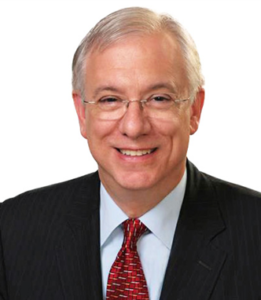
Francis Scarpaleggia was first elected to the House of Commons in 2004. He has made the protection of Canada’s freshwater his personal priority as a legislator, introducing bills and motions in the House of Commons and in parliamentary committee with a view to bringing attention to key freshwater issues. He has collaborated with numerous water experts in promoting the federal water agenda. Francis is Chair of the House of Commons Standing Committee on Environment and Sustainable Development.
Carl Yates, Interim CEO, Atlantic First Nations Water Authority Inc.
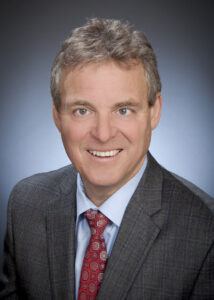
Carl Yates has extensive experience in the water utility profession having served as Project Engineer, Chief Engineer and General Manager of Halifax Water from 1988 to 2019. After retirement from Halifax Water in July 2019, he formed his own consulting company, Yates Water Management, to promote and support sustainable water management. In June 2020, Mr. Yates was appointed as the interim Chief Executive Officer for the Atlantic First Nations Water Authority [AFNWA] which was formed to provide water and wastewater services to First Nations communities in the Atlantic region. The AFNWA represents an innovative approach for First Nations in their pursuit of self-determination and a sustainable solution to pressing water and wastewater problems.
Mr. Yates obtained a Bachelor of Engineering from Memorial University of Newfoundland in 1984 and a Master of Applied Science from the Technical University of Nova Scotia [now Dalhousie University] in 1992.
Mr. Yates received the AWWA George Warren Fuller Award in 2010 for exemplary leadership and contributions to the waterworks industry. In 2019, he was awarded the NS Engineers Sexton Gold Medal for exceptional achievements in engineering practice and contributions to society. In 2021, Mr. Yates was awarded the AWWA Abel Wolman Award of Excellence in recognition of his career in the water profession that exemplifies vision, creativity, and excellent professional performance.
Building a Water Efficiency Program
January 13 : 11:00 am – 12:30 EST
One thing that has become clear as we look at water efficiency programs across Canada is how diverse the experience, drivers and progress are across the country. This session will explore this reality by presenting three case studies of utilities at very different places in their water efficiency journey, to explore the greater themes of what is driving water efficiency, water are the barriers, and what does the future of water efficiency look like.
Generously sponsored by

Presentations
Building Cost Effective Water Efficiency Programs: An Overview of the AWE Tracking Program
This presentation will highlight the tools AWE has developed to not only create effective water efficiency programs, but also to track their porgress and outcomes.
City of Vancouver Water Efficiency Program: at a Crossroads.
Neal Klassen, City of Vancouver
The City of Vancouver has abundant fresh water resources and historically did not encounter supply or infrastructure related challenges faced by many other municipalities in North America. However, population growth combined with the effects of climate change has pushed water conservation up the priority list.
Vancouver has done all the “right things” to date: plumbing code changes, watering regulations, metering ICI customers, system leak detection, etc. Yet more than 70,000 single family homes remain unmetered and per capita water consumption has not really changed for the past few years. Metro Vancouver, the regional water supplier, is now facing billions of dollars in supply upgrades.
As the largest user on the regional system, the City of Vancouver must take bigger, bolder steps. But what are those steps? Is universal metering really the best solution? Are we missing something obvious? With these and other questions, Vancouver sits at a crossroads with many important decisions to make.
Region of Waterloo - mature water efficiency program
Dan Meagher, Regional Municipality of Waterloo
Session Speakers
Ron Burke, Alliance for Water Efficiency
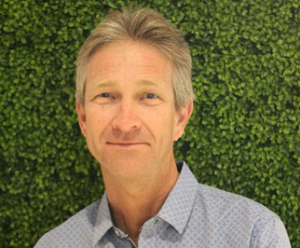
Mr. Burke became the CEO and President of the Alliance for Water Efficiency on March 22, 2021. Ron spent the first twenty years of his career working on environmental policy and programs as an Environmental Scientist for the U.S. EPA, the Environmental Health Director and Deputy Executive Director for the American Lung Association of Metropolitan Chicago, the Associate Director for the Illinois EPA, and Midwest Office Director for the Union of Concerned Scientists.
More recently, he was Executive Director of the Chicago-based Active Transportation Alliance for nine years and ran government relations for Lyft’s bike share and scooter share programs in the Central U.S.
Mr. Burke earned an M.S. from Washington University’s Department of Engineering and Policy and did his undergraduate work in life sciences at the University of Illinois, Urbana-Champaign.
Bill Christiansen, Alliance for Water Efficiency
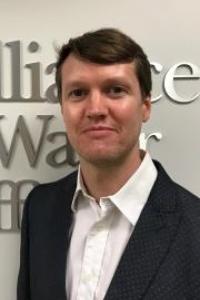
Bill is the Director of Programs at the Alliance for Water Efficiency. Bill has been in the water industry since 2002 when he got his start working for Planning and Management Consultants, Ltd. in Carbondale, IL. Bill joined the Alliance for Water Efficiency in 2007.
Bill’s work has included research related to many facets of water resource management such as policy analysis, water conservation program planning and evaluation, benefit-cost analysis, drought planning, and water rate evaluation. He has worked with water utilities throughout the United States and Canada and has traveled to the countries of China and Jordan on work related adventures. Bill’s favorite part of working for AWE is connecting with, and supporting, all its great members.
Neal Klassen, City of Vancouver

Neal Klassen is a Policy Analyst with the City of Vancouver, responsible for water efficiency education and regulation in the residential sector. He is a veteran in the water conservation industry, with over 25 years working on diverse projects like the City of Kelowna’s Water Smart Program, and the Columbia Basin Trust’s Water Conservation Program, which was the largest integrated water conservation program in British Columbia.
In Vancouver, Klassen leads the residential water metering initiative as well as developing other demand side management programs. Klassen has a Masters Degree in Environmental Education and Communication, and is also co-chair of the CWWA’s Water Efficiency Committee.
Dan Meagher, Regional Municipality of Waterloo
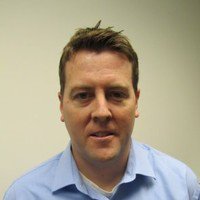
Dan is currently the Supervisor, Water Programs for the Region of Waterloo. After graduating from the University of Waterloo, Dan landed with the Ontario Government in a variety of communications and policy roles before joining the Region of Waterloo to help create a communications strategy for the Social Services department. Dan joined Water Services at the Region in 2004 and spent many years as a communications and project manager for Water Efficiency, implementing a permanent Water Conservation Bylaw, school education program, rainwater harvesting program and other community wide initiatives. More recently, he has served as a communications and public engagement adviser on projects including the Biosolids Strategy and water system upgrades. Dan now supervises an amalgamated team of source protection and water efficiency program coordinators and technologists.
Energy Management in Helping Utilities to Improve Efficiency and Achieve Net-Zero Emission
January 13: 2:00 – 3:30 PM EST
Water and wastewater utilities are looking for ways to use energy more efficiently. This not only has the potential to save significant costs in providing safe water and protect our environment, but also is a keystone in reducing urban carbon footprints. This session will examine the drivers towards utilities becoming “net zero”, ways to achieve this goal from building an energy efficiency plan to the importance of energy audits.
Generously sponsored by

Presentations
Improving Electricity Conservation in Small-Medium Municipal Water Distribution Systems Across Ontario
Rebecca Dziedzic, Concordia University and Indra Maharjan, Ontario Clean Water Agency
- Describe energy efficiency metrics for water distribution systems calculated with hydraulic models
- Present water energy mapping tool developed as part of the project
Strategic Energy Management and A Net-zero Emissions Future - Pine Creek WWTP
Morris Liu, City of Calgary and Chris Tse, City of Calgary
The Pine Creek (PC) WWTP Energy Audit project assessed the energy consumption patterns by process area, identified energy and GHG emission reduction opportunities around the plant, and provided high level estimate of potential financial and environmental benefits.
The prioritized Energy Management Opportunities (EMO) were furthered investigated at a more detailed level in the PC WWTP Energy Recovery (ER) Study project. The EMOs investigated include energy data collection, blower and process optimization, biogas utilization by co-generation etc. It identified the gaps that need to be closed to reach our goal of net energy neutrality. The operational, maintenance and capital recommendations were developed to reduce the energy consumption, GHG emissions and to boost the recovery of the embedded energy potentials.
A road map to the plant energy neutrality status was developed for consideration during long term infrastructure planning. The GHG emissions reduction from these EMOs are also assessed to support a climate change action plan.
The phased approach in exploring the energy management potentials and the pathway to a net-zero status at the PC WWTP minimized the missing areas, avoided effort spent in unfeasible ideas, either financially or technically.
Plan for a Net-zero Utility with Energy Audit
Qing Zhang, Epcor
-
- Will describe the energy audit process in action for EWSI Water Treatment Plants, Reservoirs, and Booster Station.
- The scope of work includes
- Use 2020 Data to prepare a baseline report for future benchmarking process;
- Conduct internal survey and stakeholder interviews for net-zero and energy efficiency improvement ideas;
- Complete a first draft of a road map and a capital plan to achieve net-zero emission in 2035 or 2040.
- Advocate to prepare documents for a few shovel ready projects for potential government grants.
- Share findings from this project with other utilities and encourage carrying out similar process.
Energy Audits and Methodology
Gary Leatherman, Adivisan
Session Speakers
Indra Maharjan, Ontario Clean Water Agency

Indra Maharjan currently leads OCWA’s Innovation, Efficiency and Technology group and delivers solutions around energy, climate change and resource recovery to 220 plus municipal clients across Ontario. His unique ability to work with stakeholders to develop and deliver innovative solutions has resulted in 250 plus energy efficiency projects and 5+ codigestion projects in Ontario.
Indra is passionate about Water Energy GHG nexus and have worked across sectorial industry collaboration to promote this. He is also amid volunteer with WEF, AWWA, OWWA, WEAO, ONEIA, Ryerson Urban Water, OSPE and PEO committees and has been an active mentor/ mentee for YPs and newcomers in this sector.
Rebecca Dziedzic, Concordia University

Dr. Rebecca Dziedzic is an Assistant Professor of the University of Concordia Building, Civil and Environmental Engineering Department. Her research expertise lies in developing decision support methods for sustainable infrastructure, particularly water systems. Prior to joining Concordia, Dr. Dziedzic worked as an asset management consultant and now continues to collaborate with industry professionals in order to better respond to current urban challenges.
Morris Liu, City of Calgary

Morris is a senior engineer leading the energy management team at the City of Calgary’s Water Utility. He has been working in the water and wastewater industries and utility for last twenty years. The areas he and his team searched for saving opportunities in energy use, cost and GHG emission reduction for the Calgary Water utility range from rotating equipment efficiency to power quality improvement, from bill monitoring to solar projects facilitating and fund application.
Chris Tse, City of Calgary

Chris is a Planning Engineer with about ten years of experience at Calgary’s water and wastewater utility. He manages the utility’s energy audit projects and various water and wastewater infrastructure planning projects. His priorities are to help the utility make smart energy choices by analyzing energy data, researching industry developments and providing operational support to his peers, along with helping the utility reach a long term goal of operating energy neutral wastewater treatment plants in the future.
Qing Zhang, Epcor Water Utilities

Qing is an enviromental engineer with more than 20 years of experiences in the water utility industry. With a primary focus on the energy management, water treatment plant operation, and change management, Qing also has extentive experiences in artificial intelligence modeling, and real time process monitoring and control. Qing has participated in several AWWA Research Foundation research projects, and published more than 12 papers in referred Jounrals and several reports with AWWA Research Foundation .
Qing currently serves as the chair of CWWA Energy Efficiency Committee, and is actively promoting and sharing energy efficiency knowledge with CWWA utility members and through colleagues in many municipalitis. Qing is responsible for managing energy efficiency and green house gas related issues, such as monitoring energy efficiency performance targets, analyzing and reporting on green house gas emission, planning capital projects for energy efficiency improvements, etc.
Gary Leatherman, Adivisian
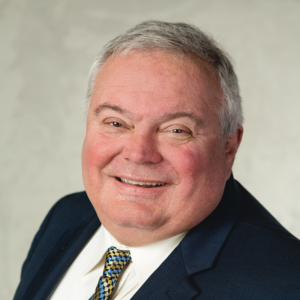
Gary is Vice President for Power Advisory and Distributed Energy at Advisian, Worley Group and has over 30 years of experience. His career has focused on analysis and strategy around the nexus of business strategy, technology, and regulatory policy. His work helps to shape the thinking of industry and governments around the world on critical business and technology issues such as new energy sector business models, distributed energy resources, microgrids, and transactive energy/energy marketplaces. He has led system assessment and planning for life extension growth projects and/or decarbonization roadmapping for over thirty district energy systems over the last three years. He holds a Ph.D. in engineering.
Cyber Security Threats and Executive Issues
January 18: 11:00 AM – 12:30 PM EST
As our world moves increasingly online – from managing aspects of our water system, to customer information and critical systems cyber security is becoming increasingly acute. A 2021 cyber attack on a water system in Florida demonstrated how vulnerable water systems can be. This session will explore the tools available to secure your cyber utility and the executive issues that threaten our systems.
Generously sponsored by

Presentations
Level Cyber Up! –Municipal Water Cyber Security Threats and Executive Issues
Bryan Hurd, Aon Cyber Solutions – Stroz Friedberg
This session is designed for senior executives in the Canadian Water and Wastewater industry including focusing on the overall enterprise leadership issues faced by the industry CEOs, COOs, General Counsels and CISOs. The presentation will cover technical threats, insurance issues, and what it is like to be in the board room during a ransomware attack, intrusion or other major incident. The presentation talks about water and wastewater cyber attacks, email compromises, and invoice scams from the year 2000 until today. The session will include an interactive Q&A are designed to “Level Up” cyber threats, vulnerabilities and incidents into the appropriate strategic issues in enterprise risk management and give attendees concrete things they can take back and action in their organizations. Presented by a “senior cyber smoke jumper” who has handled thousands of breach events, with decades of experience in protecting critical infrastructure from physical and cyber threats as well as corporate, government and international cyber operations and investigations experience.
Introducing the ISA62443/IEC62443 Series of Cybersecurity Standards & Applying them to Municipal Water SCADA Systems
Graham Nasby, City of Guelph
In 2002, the ISA (international society of automation) brought together industrial cyber security experts from across the globe to develop a series of standards to provide best practices for industrial automation and control system cybersecurity. This group of experts became known as the ISA99 committee, who develop and maintain the comprehensive suite of ISA-62443 (and IEC-62443) cyber security standards. These consensus-based technical standards are now available to guide both designers and users of industrial control systems. In addition to a design and policy framework, the 62433 series of standards also provide cybersecurity guidance – and minimum requirements – for manufacturers who develop and sell industrial control equipment. The 62443 series of cybersecurity standards continue to be actively developed, with many of the individual standards now on their third update.
This presentation, by a member of the ISA99 committee, provides an overview of how the 62443 series of standards have been developed specifically for the needs of the Operational Technology applications in critical sectors public water utilities. The talk will highlight features of the 62443 standards, and how they can be readily applied to the design and day-to-day management SCADA and other critical systems in Water utilities. Insight will also be provided into how the 62443 standards can be used in conjunction with other more general industry standards such as the ISO 27000 series, CIS20, NERC CIP and NIST CSF. Lastly, several examples of how ISA-62443 series of standard has been applied to the critical control systems used by municipal water utility for a city of 140,000 people will be discussed.
A Case for Cyber Resiliency
Thomas L. Kuczynski, District of Columbia Water and Sewer Authority
Cyber threats to the water sector are rapidly intensifying; and the range of actors is expanding. The impacts can be far reaching from a minor inconvenience to a major interruption in service.
As automation and digitization become more ubiquitous and the sophistication of cyber-attacks increase a paradigm shift in the water sector is necessary and utilities need to transition their thinking from cyber security to cyber resiliency if they are to ensure continuity of operations. Unlike cyber security which focuses on protection, cyber resiliency emphasizes a company’s ability to mitigate damage (damage to systems, processes, and reputation), and maintain operations if systems and/or data have been compromised. The ability to quickly isolate an attack, prevent or minimize damage, and finally recover are essential capabilities to achieve cyber resiliency.
Session Speakers
Bryan E. Hurd, Aon Cyber Solutions, Seattle
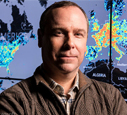
Bryan E. Hurd is a globally recognized expert in protecting critical infrastructure and has served as a US government executive and industry leader addressing threats of cyberterrorism, cyber breaches, attacks on critical infrastructure, and espionage for over 27 years. Mr. Hurd founded the US Navy’s first ever Cyber Counterintelligence program for the Naval Criminal Investigative Service (NCIS) in 1993. He holds numerous certifications in computer security, forensics, and is also board certified antiterrorism officer, and is a graduate of the US Naval Academy.
He was the Chief of Operations for the Directorate of Terrorist Identities for the U.S. National Counterterrorism Center (NCTC) and was awarded US Intelligence Community Exceptional Meritorious Service Award his leadership at the national level of watchlisting for the Boston Marathon Bombing and other national incidents. He founded the computer forensics program at EDS (now HP) and was Microsoft’s first ever chief of intelligence for Microsoft’s Digital Crimes Unit at the Cybercrime Center. He currently leads Aon Cyber Solutions (Stroz Friedberg) Seattle office. Aon Cyber’s teams offer security program and architecture development, computer forensics, incident/breach response, penetration testing, electronic discovery, litigation support, M&A Cyber Due Diligence, and investigative/fraud teams responding to some of the largest fraud cases and cyber breaches in the US, Canada and around the globe. https://www.linkedin.com/in/bryanhurd/
Graham Nasby, City of Guelph
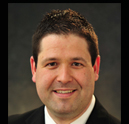
Graham Nasby, P.Eng, PMP, CAP, FS.Eng holds the position of Water SCADA & Security Specialist at City of Guelph Environmental Services, a public water utility located in Guelph, Ontario, Canada. Prior to joining Guelph Water in 2015, he spent 10 years in the engineering consulting community after completing his B.Sc.(Eng) at the University of Guelph. He is senior member of the International Society of Automation (ISA) and co-chair of the ISA112 SCADA System Standards Committee. He is also active on the CSA P125, ISA18, ISA101 and IEC-TC65A committees. Mr. Nasby is a member of both AWWA and WEF, and currently sits on the Ontario Water Works Association’s Automation Committee. In 2021, he received the Standards Excellence award from the International Society of Automation for his contributions to consensus-based technical standards in the municipal water sector. Contact: graham.nasby@guelph.ca
Thomas Kuczynski, District of Columbia Water and Sewer Authority (DC Water)
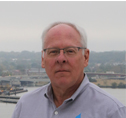
Thomas Kuczynski is the Vice President of Information Technology for the District of Columbia Water and Sewer Authority (DC Water) and the President of Blue Drop. Tom joined DC Water in August 2013 and heads up an IT team of 60 individuals and a $20 million budget to develop applications that support all aspects of DC Water’s business. As President of Blue Drop, Tom leads the team responsible for generating non-ratepayer revenue from various products and services including Bloom, intellectual property and other non-traditional revenue sources.
Tom has more than 40 years of experience in utility management and operations including nearly 30 years at Philadelphia Gas Works (PGW) in two separate terms of employment. As Senior Vice President, Strategic and Information Services for PGW Tom was responsible for managing Strategic Planning, Enterprise Performance Management, Information Services and Internal Auditing. He has significant experience in a wide range of utility information technology solutions including customer information system, credit and collections, ERP, SCADA, GIS, AMI and mobile work management. Recently he led the development of DC Water’s Pipe Sleuth an AI and machine learning solution for automated defect detection of sewer pipe videos.
He has also worked for Pacific Gas & Electric’s National Energy Group as Director of Technology Strategic Planning and Architecture, and for Delmarva Power in Wilmington, Delaware where he provided IT Strategic Planning Services to the Energy Supply Group.
Tom is a graduate of La Salle College of Philadelphia and the Executive MBA program at University of Maryland University College.
Biosolids Management
Across Canada:
A Snapshot
January 18: 2:00 – 3:00 pm PM EST
While every Canadian flushes their toilet, the resulting biosolids are not all managed the same across our nation. This session highlights the diverse approaches taken by presenting six examples from across Canada. Viewers can gain an appreciation of the diversity and might provide them with ideas that might apply to their communities.
Generously sponsored by

Biosolids Management in Charlottetown, PEI
Richard MacEwen, City of Charlottetown
Canada’s garden Province PEI promotes the culinary experience of field to table. This presentation will provide insight into the path from the table back to the field. The City of Charlottetown produces an Exceptional Class A biosolid that is used to enhance agricultural lands on PEI. The biosolids treatment process includes pasteurization, anerobic digestion and drying.
A Synopsis of Biosolids Management Practices in Western Canada
Darren Keam, WSP
Urban centres and rural municipalities in Western Canada have sufficient land to complete direct land application of treated biosolids resulting in significant benefits such as the recycling of valuable nutrients to agricultural land. The four seasons of the year require some jurisdictions to have multiple approach to accomplish the sustainable reuse of biosolids in many centres across Canada and specifically Western Canada. This synopsis will review the approaches that both large and small centres are taking for biosolids management to sustainably manage this by-product resource at different times of the year.
Innovative Solutions to Lagoon Dredging in a Northern Yukon Community
Blair Benn, Lambourne Environmental
Lambourne Environmental was contacted to see if we could provide dredging services to a remote Yukon community within the Arctic circle. The community of Old Crow needed to rehabilitate their existing wastewater lagoon, removing the accumulated sludge from the cell as well as removing the vegetation growing around and in the cell. All equipment used on the project needed to be able to fit on a commercial aircraft for transport to the site. While some of the equipment required did not yet exist that would do these multiple tasks, Lambourne staff were able to design and build a dredge that would provide both sludge removal and also remove the vegetation from the cell. Over the course of 2 seasons, and amidst COVID, the project was a success and the lagoon was rehabilitated and functioning efficiently.
North Battleford, SK: From Landfill Disposal to Resource Recovery with Lystek THP and a LysteGro Fertilizer Program
Sara Mason-Renton, Lystek
The City of North Battleford was experiencing odour issues with its practice of landfilling dewatered, Class B biosolids. In response to Provincial mandates for change, Lystek THP was competitively selected as the most fiscally and environmentally responsible solution. Implementation of this technology transitioned the City’s biosolids management program from unsustainable landfill disposal with various operational challenges to a sustainable resource recovery program producing a CFIA regulated fertilizer product – LysteGro®. This program is an example of an advanced biosolids resource recovery program that is viable for small to medium sized communities, and not only large urban centres. This presentation will provide an overview of the Lystek THP technology, LysteGro fertilizer program, focusing on the North Battleford Wastewater Treatment Plant as a case study for the discussion.
Trends in Alberta and BC Biosolids Management
John Lavery, Sylvis
Session Speakers
Sarah Mason-Renton, Lystek

Sarah’s career has focused on the intersection of environmental sustainability, biological processes, and community and social issues, particularly in the rural and agricultural sector. Sarah brings experience with consultation and engagement processes in the environmental consulting and academic sectors and has focused her work on biosolids resource recovery projects for the last 10 years.
As Business Development Manager, Sarah works to drive Lystek’s growth across Canada and the Midwestern and Eastern United States. She brings her interdisciplinary expertise to her role at Lystek and is responsible for technical assessments, business case evaluations, communications, and stakeholder engagement. Sarah works with customers and prospects to understand generators’ needs and help to develop resource recovery solutions that best suit each facility.
John Laverly, Sylvis
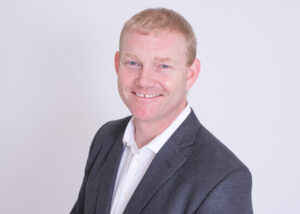
John Lavery has been involved in biosolids research and recycling since 2001. After obtaining his MSc in Forest Ecology (biogeochemistry and nutrient cycling) from the University of British Columbia, John pursued opportunities in New Zealand, where he developed a strong reputation in land treatment and beneficial use of wastes as the Technical Manager for the New Zealand Land Treatment Collective. Throughout his career, he has undertaken work for, or collaborated with, governments, municipalities, and private industry in Canada, the United States, New Zealand, France, Australia and Chile. His experience is broad and spans all aspects of the residuals management continuum for both liquid and solid residuals.
John has been a key industry practitioner in Canada for over 10 years. At SYLVIS, John is a Senior Environmental Scientist and Business Development Manager. His wealth of experience and knowledge with all aspects of residuals management plays a critical role in SYLVIS’s project success. John has been instrumental in the development of beneficial use programs for the City of Calgary, the City of Prince George, Metro Vancouver, and the City of Edmonton. He is well-recognized for his innovative approaches using residuals as a tool in solve environmental challenges. He is the visionary behind the BIOSALIX program, an innovative mine operational-scale mine reclamation project that utilizes municipal biosolids from the City of Edmonton to amend the existing topsoil and to establish a willow biomass plantation
Blair Benn, Lambourne Environmental

Blair was born in Saskatoon, Sk. but moved with his family to Alberta in 1967. Blair attended the University of Calgary studying Microbiology for 2.5 years before transferring to the University of Alberta, graduating with a Bachelor of Science in Agriculture.
Post graduation, Blair worked in livestock feed sales, and later was nutrient manager for a 30,000 head feedlot, where he directed a large scale composting operation creating valuable class A compost for use on agricultural land. Currently Blair is President of Lambourne Environmental Ltd, an Alberta based water and wastewater company specializing in beneficial reuse of municipal and industrial biosolids in western and northern Canada.
Darren Keam, WSP

Darren Keam, M.Sc. P.Ag. Darren is a Regional Manager and Senior Soil Scientist for the WSP Canada Inc. of the Environment and Geotechnical Services in Winnipeg, Manitoba. Darren has over 22 years of experience in agriculture and environmental management consulting. As a Professional Agrologist he provides agri-environmental advisory services for the land application of biosolids in Manitoba providing guidance to municipal clients for the sustainable and beneficial reuse of nutrients for cooperating farm producers. Darren also completed his Master of Science in Environment and Management, evaluating the suitability of lagoon wastewater irrigation in the Interlake region of Manitoba.
Richard MacEwen, Charlottetown Water and Sewer Utility

Richard MacEwen is the Manager of the Charlottetown Water and Sewer Utility. He has worked with the Utility since 2011. He holds a Chemical Engineering Degree from the University of New Brunswick, and a Masters Degree in Environmental Technology from Imperial College London. Prior to joining the City of Charlottetown, he worked as an environmental consultant based in PEI, a water resources advisor in Vanuatu and an infrastructure manager in Ghana. Richard is the PEI representative on the CWWA Board of Directors.
New and On-Going Challenges in Drinking Water Quality
January 20: 11:00 AM – 12:30 PM EST
Drinking water quality, and consumer perception of that quality is greatly impacted by numerous factors. Water utilities are finding themselves grappling with new challenges – from the growing threat of algal growth due to climate change to shifting water taste due to changing water chemistry. This session will explore these emerging challenges in water management – from detection to public outreach.
Generously sponsored by

Presentations
Consumers’ Perceptions of Drinking Water: Odors, Anosmia, and Parosmia
Andrea M. Dietrich, Virginia Tech, USA
The myriad of earthy-musty odorants, and variable human perception of these odors, is an increasing challenge for water professionals who desire to identify and control aesthetic issues and increase customer satisfaction. Earthy-musty odors in drinking water are frequently, but not always, the result of geosmin and 2-methylisoborneol which are produced by naturally occurring cyanobacteria and actinomycetes. Other biologically and chemically produced earthy-musty odorants in water include the haloanisoles and pyrazines, both of which are increasingly being identified in source waters and in tap water. Added to the difficulty of identifying which odorant causes earthy-musty is the complexity of the human sense of smell. People vary in their sensitivity to specific odorants and also may have specific anosmias where they cannot detect select odors or even parosmia which is a distorted sense of smell. Another complexity is that inconsistent descriptors many be used by different people to describe the same chemical odorant. This presentation will address the diversity of earthy-musty odorants and the varying ways humans perceive and describe odors.
ATRAPP – Algal Blooms, Treatment, Risk Assessment, Prediction and Prevention Through Genomics
Sebastien Sauve, City of Montreal
Genetic biosensors to forecast cyanobacteria toxic blooms: a novel technology available as user-friendly kits of reagents.
Sandra Lagauzere, Microbia Environment
Microbia Environnement offers a cutting-edge molecular technology, that provides a fast, specific and sensitive tool for the detection of cyanobacteria and the prediction of toxic bloom occurrence in environmental waters. It relies on genetic biosensors recognizing specific cyanobacteria fingerprints and revealing their actual metabolic activity, thus their growing trend, using a simple ELISA-type colorimetric assay. Applied to high-frequency monitoring, this unique method matches with the needs of high-throughput and cost-effective capacities which are essential for improving current surveillance programs and early warning systems. Besides reglementary methods, it provides waterbody managers and drinking water utilities with a true standardized and self-monitoring capacity to anticipate cyanobacteria blooms and to engage proactive decision-making. Regarding the importance of water preservation in Canada, and the exemplary concern of both citizens and stakeholders, the solution brings concrete perspectives to protect people, pets and wildlife and to preserve economic activity around water bodies threatened by microbial contaminations.
Session Speakers
Andrea Dietrich, University of Virginia
Dr. Andrea M. Dietrich is a professor of Civil and Environmental Engineering at Virginia Tech with over twenty-five years of experience in teaching, research, and consulting within the interdisciplinary field of environmental engineering and sciences. Her areas of expertise are drinking water treatment, aesthetic issues – taste, odor, color- drinking water, water quality, fate and transport of organic and inorganic chemicals. She has authored over 150 refereed journal articles, reports, and book chapters, plus provided lectures and hands-workshops on tastes-and-odors in water throughout the globe. She is the past chair of the AWWA’s Taste and Odor Committee and the chair of the International Water Association’s Specialist Group on Tastes, Odours, and Algal Toxins in Drinking Water Resources and Aquaculture.
Dr. Dietrich earned a Bachelor of Science degree in Chemistry and Biology from Boston College, a Master of Science in Environmental Science and Engineering from Drexel University, and a Doctorate in Environmental Science and Engineering at the University of North Carolina Chapel Hill.
Sebastien Sauve, City of Montreal
Sébastien Sauvé is Associate Dean of Research and Creation of the Faculty of Arts and Sciences of the Université de Montréal. He is full professor in Environmental Chemistry at the Université de Montréal and outgoing academic director of the Institut EDDEC (environment, sustainable development and circular economy). He is also foreign correspondent to the Académie d’Agriculture de France. He has studied at McGill University and Cornell University. He directs a group of about twenty students and researchers that work on a variety of subjects going from contaminated soils, circular economy, blue-green algae, ultratrace analysis using mass spectrometry, as well as the impacts of emerging contaminants on health and the environment. He has been invited to many international conferences and has research partners on all continents. He received the AFCAS Michel-Jurdant Prize in environmental sciences.
Sandra Lagauzere, Microbia Environment

Sandra Lagauzere holds the position of Business Developer at Microbia Environnement, a French company offering a novel molecular tool for detecting harmful microorganisms in water, in particular bloom-forming toxigenic cyanobacteria. Graduated in biology and environmental sciences, Sandra has been involved for ten years in diverse research projects in ecotoxicology, biogeochemistry and ecological modelling of freshwater ecosystems, at different French and German institutes. With an additional seven-year experience in the biotechnology industry sector, Sandra has been convinced by the capacity of Microbia Environnement for game-changing anticipation of microbial contaminations. She is now taking the challenge to boost the development of the young company and to spread its solutions for improving water quality surveillance.
Proposed amendments to the Wastewater Systems Effluent Regulations
January 20: 2:00 – 3:30 pm EST
This session will be an interactive consultation with representatives from Environment and Climate Change explaining the proposed changes and providing delegates with an opportunity to ask questions and provide feedback.
Generously sponsored by
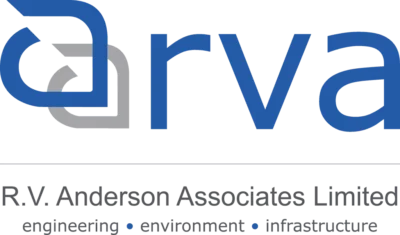
National Adaptation and Mitigation Case Studies
January 25: 11:00 AM – 12:30 PM EST
This session will explore key issues in the Water Resources chapter from Natural Resources Canada’s “Canada in a Changing Climate: National Issues” report along with case study presentations from across the country on adaptation and mitigation on a local level. Firstly the authors of the Water Resources Chapter in the National Issues Report will provide a summary on the chapter and a national overview on the preparedness of the country to climate change pressures. This will be followed by case studies from across the country ranging from assessing vulnerability of infrastructure to climate change in Halifax, Nova Scotia, quantifiying GHG emissions from treatment facilities in Toronto, to adapting to climate change pressures in the Okanagan Basin out in the west of the country.
Generously sponsored by

Presentations
“Canada in a Changing Climate: National Issues” report Water Resources Chapter Summary
Hayley Carlson, University of Saskatchewan and Alain Pietroniro, University of Calgary
Global climate change has already affected Canada’s cold-dominated water cycle, and while future changes are uncertain, they will include risks of reduced water availability, drought, and extreme rainfall. To adapt to uncertainty and changing conditions, Canadian water organizations are beginning to embrace exploratory modelling, scenario exercises and adaptive management, and enhance coordination across new institutional arrangements. At the same time, adaptation is a local, place-based process and capacity challenges are often concentrated in rural, northern, and Indigenous communities. Water practitioners cannot always access the high quality, locally relevant data they need to reduce vulnerabilities in systems and infrastructure. Canadians support action on water-related risks, but the issue competes for public attention and many Canadians remain unaware of the efforts required to meet adaptation goals. Ultimately, Canadian organizations and institutions remain unevenly prepared to manage water-related risks associated with climate change.
Local Experience 1: Halifax Water Vulnerability to Climate Change Risk Assessment
David Blades, Halifax Water
In 2019, Halifax Water created a climate change adaptation framework within the utility’s Long-Term Planning Framework. The adaptation framework is a three-stage process: Assessment, Action Plan, and Implementation. Many industry best practice frameworks studied during development of the Halifax Water adaptation framework stop at the assessment stage. However, the Halifax Water framework identifies how an infrastructure asset progresses from the stage where risks are identified and assessed through development of an adaptation strategy to implementation.
Halifax Water is currently completing a pilot vulnerability to climate change risk assessment study for two of the utilities fourteen asset classes. This presentation will provide an overview of the “Vulnerability to Climate Change Risk Assessment – Water Supply Plants and Water Supply Dams Asset Pilot” project; lessons learned during the pilot; and how the asset class level risk assessment fits within the climate change adaptation framework.
Local Experience 2: Greenhouse Gas Emissions from Ontario Water and Wastewater Treatment Facilities
Emily Zegers, City of Toronto
As a growing number of governments make “net zero” pledges and declare climate emergencies, an understanding of greenhouse gas (GHG) emissions is becoming increasingly important across all sectors. Significant opportunities exist for emissions reduction in water/wastewater operations. However, because most utilities in Canada are not required to calculate and report on their emissions, the types and scale of the various greenhouse emissions from water and wastewater operations are not well understood.
In 2020 Toronto Water embarked upon a collaboration with the University of Toronto to complete an inventory of GHG emissions from its water and wastewater treatment operations. The carbon footprint that will be developed through the study will go beyond the reportable emissions to quantify the utility’s most significant GHG impacts, both on and off sit
This presentation will provide an overview of the types of GHG emissions associated with water and wastewater treatment and will present emission breakdowns for two of Toronto’s facilities. Potential process changes will be discussed in terms of their potential for reducing emissions. Finally, a case will be presented for why even in the absence of regulation, utilities should act now to understand and reduce their GHG emissions.
Local Experience 3: The Okanagan Basin Water Board
Anna Warwick Sears, Okanagan Basin Water Board
With the changing climate the OBWB plays an important role in generating a more systemic approach to water management in the Basin, especially under rather severe climate projections for more frequent flood/drought conditions.
Session Speakers
Hayley Carlson, University of Saskatchewan

Hayley co-led the development of the Water Resources Chapter for Natural Resources Canada’s Canada in a Changing Climate series while working for Global Water Futures, a research program focusing on pan-Canadian water issues. She has a BSc. in Environmental and Conservation Sciences with distinction from the University of Alberta, majoring in the human dimensions of environmental management. Her Public Policy Master’s research focused on the influence of stakeholder policy narratives on decision-making about water. She currently works as a Policy Analyst for Prairies Economic Development Canada, is President of the Saskatchewan Environmental Society, and a board member with the SES Solar Co-operative.
Dr. Alain Pietroniro. University of Calgary
Dr. Alain Pietroniro is an internationally recognized expert in hydrology and sustainable water systems, who has spent almost three decades studying water resources engineering. A full Professor of Civil Engineering at University of Calgary’s Schulich School of Engineering, Dr. Pietroniro’s research is focused on improving, developing and evaluating hydrologic models, understanding the sensitivity of water resources to climate variability and change, and developing the next generation of hydrological modelling systems. Dr. Pietroniro is the former Executive director for the National Hydrological Service within the Meteorological Service of Canada which included the management of the Water Survey of Canada.
David Blades, Halifax Water
David is the Infrastructure Program Manager within the Asset Management team at Halifax Water. Responsible for long term infrastructure planning, hydraulic modelling, and corporate flow monitoring programs, David works to provide information to various Halifax Water stakeholders to facilitate data driven decision making in the prioritization of capital and operating needs.
With the exception of a brief hiatus in Fredericton to complete a Civil Engineering degree at the University of New Brunswick, David is a lifelong resident of Halifax, Nova Scotia.
Emily Zegers, City of Toronto

Emily is a Senior Engineer in Toronto Water’s Process, Innovation and Energy group with 20 years of water industry experience. Her focus areas include wastewater process optimization, instrumentation and data management, water reuse, and GHG emissions. Emily is past chair of WEAO’s Wastewater Treatment and Technologies Committee and current chair of the OWWA/WEAO Climate Change Committee. She holds a degree in Civil Engineering from Queen’s University.
Anna Warwick Sears, Okanagan Basin Water Board

Anna Warwick Sears is the Executive Director of the Okanagan Basin Water Board, a collaborative local government agency focused on water science, management and sustainability of the Okanagan watershed. Raised in B.C., Dr. Sears received a PhD in population biology at the University of California – Davis, returning to Canada in 2006 to work for the Water Board. She currently serves as a member of the International Osoyoos Lake Board of Control, appointed by the International Joint Commission.
Plastics and Microplastics in the environment
January 25: 2:00 – 3:30 PM EST
Plastics have become inescapable in our daily life – from packaging, to clothing and even personal care products – plastics are everywhere. There’s growing research that plastics and microplastics are having lasting, damaging impacts on marine and freshwater environments. This session will explore not only the growing problem, but the municipal wastewater system contribution and what technologies and outreach programs are available to mitigate this growing problem.
Generously sponsored by
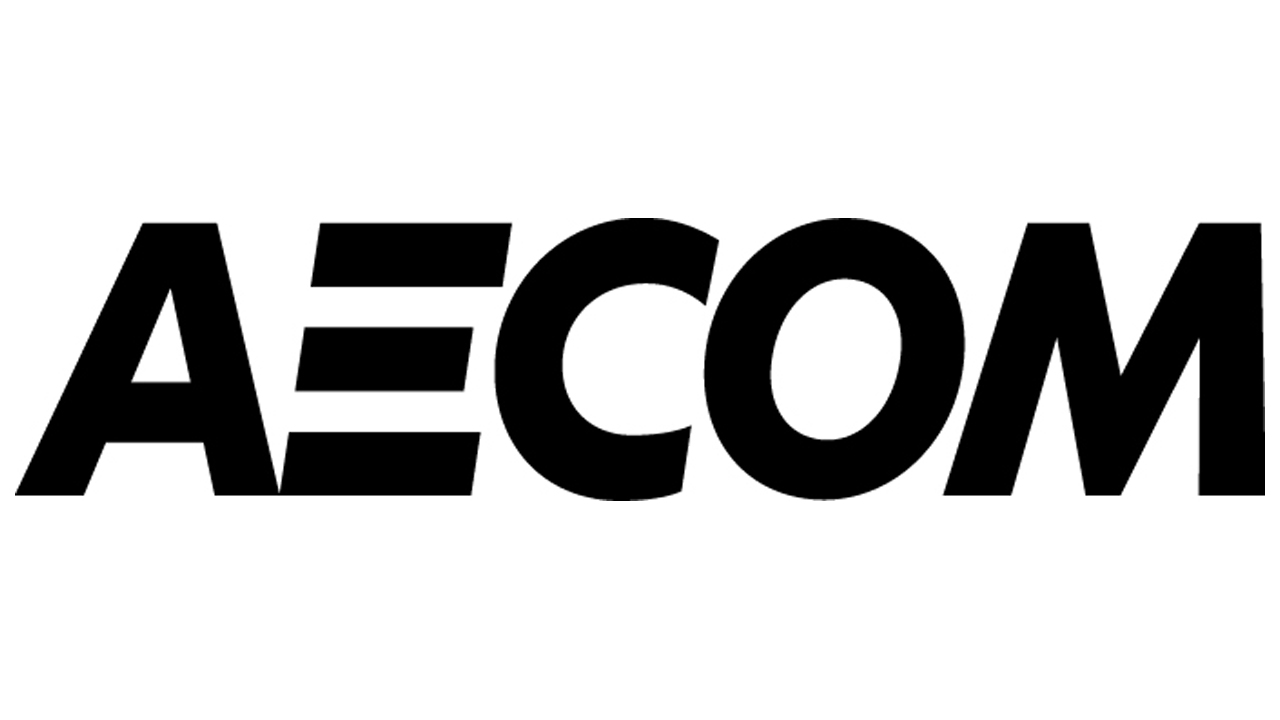
Urban pathways for microplastic
Dr. Shreyas Patankar and Stephanie Wang, Ocean Wise
Synthetic polymer microfibers account for a large fraction of microplastic pollution in aquatic environments. Ocean Wise’s Plastics Lab conducted an extensive research project on the variation in the microfiber shed rate of different consumer fabrics based on their material design and construction. Our research highlighted the importance of “first-wash” cycles and the efficacy of microfiber lint filters. A separate research project has been focused on study of urban pathways for microplastics entering the ocean like wastewater treatment plants, combined sewer overflows, and stormwater. This recently led to the development of new analytical methods allowing efficient estimates of the abundance, morphology, and chemical composition of microplastics in urban sampling environments. These methods enable the consistent, high-volume monitoring of microplastic abundance needed to identify strategies for intervention to mitigate microplastic pollution in the ocean.
Our Ocean Thanks You: Metro Vancouver’s Microfibre Reduction Campaign
Carol Nicholls and Dana Zheng, Metro Vancouver
Microfibres from laundry are one of the main sources of microplastics in the ocean, a fact that is virtually unknown to the general public. In 2021, Metro Vancouver launched a campaign to reduce microfibres generated in laundry, developing creative materials that asked residents to switch to cold. Learn about how and why the campaign was developed, original research findings and what to consider when trying to change public behaviours. Having developed dozens of behavior change campaigns over the years – many of them tackling “icky” wastewater topics that residents would rather not think about – we have a pretty good idea of what does and doesn’t work.
Microplastics in Water and Wastewater
Banu Ormeci, Carleton University
Plastics can persist in water environments for hundreds to thousands of years. They do not biodegrade and instead break up into smaller pieces over time leading to their accumulation in macro, micro, and nanoplastic forms in water environments. This presentation will summarize the latest research findings on the quantities, fate, transport, and impact of plastics in water environments and wastewater treatment plants, potential risks they may pose, and how they may impact current practices and regulations. The presentation will also discuss Canadian technologies and capacity-building efforts in Canada.
Session Speakers
Dr. Shreyas Patankar, Ocean Wise

Dr. Shreyas Patankar is a Research Scientist at the Ocean Wise Plastics Lab. Shreyas works on forensic analysis of environmental microplastics, using infrared spectroscopy, microscopy, and data science tools. He holds a PhD in Physics from the University of California, Berkeley, where he studied nonlinear optical properties of quantum materials. Shreyas’ research interests include materials science, energy technology, and science policy.
Stephanie Wang, Ocean Wise

Stephanie Wang is the Lab Manager for the Ocean Wise Plastics Lab. Stephanie’s research focus is on wastewater facilities as major urban sources and pathways of microplastics emission, and on analytical techniques to study urban liquid waste. She holds a Master of Science degree in Environmental Engineering from Queen’s University. Before Ocean Wise, she worked on conservation data mapping of the Ottawa River boundary and on plantation restoration of stormwater ponds in the Ottawa area.
Carrol Nicolls, Metro Vancouver

Carol Nicolls is a Communications Specialist with Metro Vancouver. She has spent the past nine years talking to the general public about wastewater issues, including four behaviour change campaigns. Prior to joining Metro Vancouver, Carol worked as a Communications Officer with the World Health Organization (focusing on HIV/AIDS financing and malaria), and as a city planner. Carol has a Master’s in Community and Regional Planning.
Dana Zheng, Metro Vancouver

Dana Zheng is the Source Control Program Manager with Metro Vancouver’s Liquid Waste Services and leads a team dedicated to preventing and reducing liquid waste contaminants from entering the region’s wastewater systems. Prior to this role, Dana focused on drinking water policy and planning for Metro Vancouver. She has a Master’s in Civil Engineering from the University of Toronto and Bachelor’s in Civil Engineering from McGill University.
Banu Ormeci, Carleton University

Dr. Banu Örmeci received her MS and Ph.D. degrees from Duke University (USA). She is the Jarislowsky Chair in Water and Health and the Director of the Global Water Institute at Carleton University. She leads an internationally recognized research program on wastewater and biosolids treatment, and her research has generated several patents and new technologies. Her research on microplastics is funded by the ECCC under the Zero Plastic Initiative, and she collaborates with Canadian technology providers on microplastics monitoring in the environment.
New and On-Going Challenges in Drinking Water Quality – chemical contaminants
January 27 11:00 AM – 12:30 PM EST
As analytical methods continue to be improved and developed we are finding a wider range of chemical contamination in our freshwater ecosystems and groundwater. For example, PFAS and PFOS termed “forever chemicals” are highly persistent in the environment, and Chemicals used in a wide variety of everyday products are being found in the environment and in organisms. This session will explore PFAS/PFOS and plastics and the latest research on their presence in drinking water, and the efficacy of available technologies in removing them.
Generously sponsored by

Presentations
PFAS in Drinking Water: Challenges and Solutions
Krista Barfoot, Stantec
The evolution of regulatory criteria for per- and polyfluoroalkyl substances (PFAS) in water in Canada has important implications for utilities with water supplies potentially impacted by various PFAS sources (e.g., aqueous film-forming foam [AFFF] releases, landfill leachate, industrial wastewater, or other industrial activities). Drawing on past project experience, this presentation will review PFAS-impacts observed in international drinking water systems and the treatment technologies applied to address elevated PFAS concentrations. Example case studies from pilot and full-scale treatment systems designed to remove PFAS – including both the application of granular activated carbon (GAC) as well as ion exchange (IX) as a high-performing adsorptive alternative – will be examined. Preliminary results from a pilot study being conducted by Stantec in conjunction with the Johns Hopkins University Bloomberg School of Public Health that directly compares IX and GAC from both an operational and a water quality perspective will be reviewed.
Concentrations of Per- and Polyfluoroalkyl Substances (PFAS) in Ontario’s Source and treated Drinking Water
Sonya Kleywegt, Ontario Ministry of the Environment, Conservation and Parks
Risk management measures (RMMs) are a broad set of tools used in global treaties and national regulations to manage, ban or restrict the use of toxic chemicals. To evaluate the occurrence and potential risk of Per- and polyfluoroalkyl substances (PFAS) in Ontario, up to 14 PFAS were quantitatively measured in source waters (lake, river, groundwater) and drinking waters pre- and post- implementation of RMMs. The most frequently detected PFAS in source waters pre-RMM were perfluorooctanoic acid (PFOA; 83%) and perfluorooctane sulfonate (PFOS; 76%) and the maximum ∑PFAS10 was 42.1 ng/L. Post-RMMs, the maximum ∑PFAS10 (including PFOS) was significantly reduced to 15.5 ng/L, well below the FEQG for PFOS. To evaluate post-RMMs risk to human health, 226 drinking water samples were collected from 25 drinking water systems with conventional and advanced treatment. All individual (or ∑PFAS) concentrations are well below current and proposed Health advisory levels or regulatory guidelines/standards for PFAS.
Microplastics in Drinking Water: Sampling, Treatment Performance and Issues Regarding Health Impacts.
Robert Andews, University of Toronto
Limited studies around the globe have shown microplastics to be present in both surface waters as well as drinking waters. The World Health Organization concluded that additional studies are required to understand the extent of contamination and risks associated with microplastics in treated drinking water. Microplastics are considered a “triple-threat” as health impacts may be associated with: 1) Ingestion of small microplastic particles of various polymer types, especially those ranging from 1um-20um, 2) Sorption of chemical contaminants such that microplastics may serve as vectors of transport, especially when considering contaminants of emerging concern, and 3) the potential for pathogenic organisms to associate with microplastic particles.
As no standardized methods have been adopted to quantify the concentration of microplastics in drinking waters, direct comparisons among studies presented in the literature are challenging as varying sample collection and extraction methods have been employed.
Our work has compared and optimized sampling methods, as well as examined treatment performance regarding microplastic removal at water treatment facilities. This foundation now allows us to focus on the major health impacts described above.
Krista Barfoot, Stantec

Recognized as a Contaminated Sites Specialist, Dr. Barfoot has 25 years of industry experience with expertise spanning from the technical elements of project delivery to program management, risk management, policy development, and stakeholder communication. A Qualified Person for Risk Assessment (QPRA) (per Ontario Regulation 153/04), Dr. Barfoot’s technical expertise includes strategic site planning, risk assessment (RA), vapour intrusion (VI) assessment, management of excess soil, non-aqueous phase liquid (NAPL), risk mitigation measures, and emerging contaminants – including per- and polyfluoroalkyl substances (PFAS). Serving as Stantec’s Emerging Contaminants Program Lead, she is experienced in investigative and analytical approaches, risk assessment considerations, and remediation techniques for PFAS, and has provided multiple PFAS training seminars and conference presentations. Dr. Barfoot has an established industry presence via engagement in numerous industry and regulator associations, including the Ontario Environmental Industry Association (ONEIA), Canadian Brownfields Network (CBN), Interstate Technology and Regulatory Council (ITRC), and the Ministry of Environment, Conservation and Parks (MECP) Excess Soil Engagement Group (ESEG). She currently serves as the Chair of ONEIA’s PFAS Committee, Vice-President of the CBN, and is a member of the ITRC PFAS Regs, Tox, and Risk Sub-group and Training Sub-group.
Sonya Kleywegt, Ontario Ministry of the Environment, Conservation and Parks
Sonya Kleywegt is a senior research toxicologist with the Technical Assessment and Standards Development Branch of the Ontario Ministry of the Environment, Conservation and Parks. She is responsible for assessing the impact of emerging contaminants in all environmental media (wastewater, drinking water and biosolids) on environmental and human health in Ontario. In particular she is responsible for the coordination and delivery of Annex 2 (Harmful Pollutants) under the Canada-Ontario Agreement on Great Lakes Water Quality and Ecosystem Health.
Robert Andews, University of Toronto
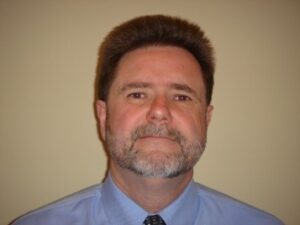
Prof. Andrews has over 25 years of experience in the field of drinking water treatment, both as an academic researcher as well as a consultant. He holds a Natural Science and Engineering Research Council (NSERC) Senior Industrial Chair in Drinking Water Research at the University of Toronto, Department of Civil and Mineral Engineering. He regularly collaborates with researchers across Canada, the United States and internationally regarding current and emerging drinking water related issues.
How the pandemic changed water management and how we reopen
January 27: 2:00 – 3:30 PM EST
As analytical methods continue to be improved and developed we are finding a wider range of chemical contamination in our freshwater ecosystems and groundwater. For example, PFAS and PFOS termed “forever chemicals” are highly persistent in the environment, and Chemicals used in a wide variety of everyday products are being found in the environment and in organisms. This session will explore PFAS/PFOS and plastics and the latest research on their presence in drinking water, and the efficacy of available technologies in removing them.
Generously sponsored by

Presentations
Lessons learned from recommissioning of building water systems after extended low occupancy caused by the COVID-19 shutdowns: challenges and findings from research efforts
Marianne Grimard-Conea, Ph.D student, Industrial Chair on Drinking Water, Polytechnique Montreal
Marianne will share her experience in recommissioning large buildings in the city of Montreal following prolonged low occupancy and water demands exacerbated by COVID-19 shutdowns. The effectiveness of guidance documents for the safe re-opening of buildings and challenges encountered with sampling water quality will be reviewed. More particularly, research findings from extensive samplings in three large buildings before and after implementing flushing protocols will be exposed. These research efforts will include preliminary results on the occurrence of Legionella pneumophila, the bacterium responsible for increased cases of Legionnaires’ disease in drinking water, and other physico-chemical parameters.
Jennifer Clancy - ESRI
Jennifer Clancy
Utility Experiences - COVID 19
Wendy Krokosek, Halifax Water and Steve Craik, Chair, CWWA Drinking Water Quality Committee
The Impact of the Pandemic on Drinking Water Quality – Lessons Learned from Utility Perspective – S. Craik
In early 2020 drinking water systems had to change their operations rapidly to adapt to the realities of the COVID-19 pandemic. The primary focus was to ensure the health and safety of critical staff so that they could continue to reliably provide safe drinking water to the communities and businesses they served. Utilities also had to address change in water use patterns in municipal distribution systems and the impact of restrictions and closures on routine water quality and in-home lead sampling programs. Along with public health officials, utilities also were drawn into the question of potential adverse water quality impacts at the tap use in large customer facilities with extensive plumbing systems due to extended periods of little or no water use. This presentation will summarize the experiences of a few water utilities represented on the CWWA Drinking Water Quality Committee in addressing these challenges. Lessons learned and suggestions for moving forward will be shared.
Session Speakers
Marianne Grimard-Conea, Ph.D student, Industrial Chair on Drinking Water, Polytechnique Montreal

Marianne Grimard-Conea is a Ph.D student at Polytechnique Montreal in the industrial chair on drinking water. Under professor Michèle Prévost, she is completing her research project on the impacts of low water demands on the microbiological water quality distributed in large buildings. More recently, she has participated in commenting guidance documents on the safe recommissioning of building water systems after extended low occupancy and stagnation events caused by the SARS-CoV-2 pandemic, as well as conducting several demonstrations studies to assess the effectiveness of these guidelines.
Jennifer Clancy, Environmental Science Policy and Search Institute
Dr. Jennifer Clancy is the Chief Scientist with the non-profit Environmental Science, Policy, and Research Institute based in Philadelphia. She is a microbiologist and water quality and treatment expert with 40 years of experience. She has worked on Legionella and Legionnaires’ disease since 1980, both in clinical research and environmental investigations. She was the recipient of the Water Research Foundation Water Research Award in 2012 and received the AWWA AP Black Award for excellence for water supply research in 2014. Her current focus is on improvement of building water quality through research and policy change.
Wendy Krkosek, Halifax Water
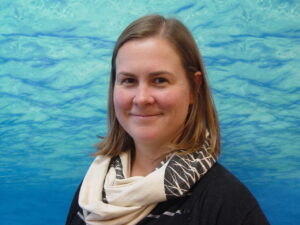
Wendy Krkosek Ph.D. P.Eng., is the Water Quality Manager with Halifax Water, where she works with treatment, water quality and distribution operations staff to conduct water quality research, solve water quality and treatment problems, improve treatment methodologies, and develop and implement water quality plans.
Wendy received her BASc in Civil (Environmental) Engineering from the University of Waterloo, followed by a PhD in Civil Engineering at Dalhousie University. Wendy is currently the Technical Director with ACWWA.
Steve Craik, Chair CWWA Drinking Water Quality Committee
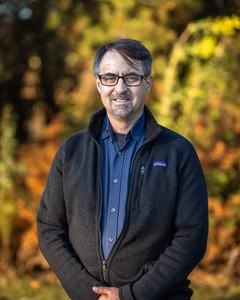
Steve is a water quality expert dedicated to public health and environment protection. He has over 22 years of combined utility practice, applied research and teaching experience in the areas of drinking water and wastewater treatment. He applies his knowledge and experience to solve water quality problems and to help develop strategies to address emerging water quality challenges. He was Director of Quality Assurance and Environment with EPCOR Water Canada in Edmonton for nine years where he led a team of scientists, technologists, engineers and environmental specialists that was responsible for monitoring of drinking water and wastewater quality, regulatory compliance, treatment process optimization, environmental and watershed management and cross connection control programs. Prior to that, Steve was Associate Professor the Environmental Engineering program at University of Alberta and taught courses and led a research program in the areas water and wastewater treatment.
Impact of COVID 19 on theWorkforce
February 1
11:00 am – 12:30 pm EST
We’ve talked a lot about how the pandemic has affected the budget and the operational processes, but how did it impact your most important resource bank – your people? How did you address stress and fatigue? Did you lose employees? Did you have to hire new? What training was required and what training was deferred? How did you address collective agreements?
This is a completely interactive and participatory session for water leaders to share stories of how this pandemic has affected their workforce and to share some of their solutions; the ones that worked (and the one’s that didn’t).
A panel of utility leaders from across the country will set the stage and get us started, but then we’ll go to you, the delegates to turn on your camera and mic and share with your colleagues.
Panelists
- Ian McIlwham, Region of Durham
- Richard MacEwen, City of Charlottetown
- Michele Grenier, Ontario Water Works Association
- John Presta, Region of Durham
- Greg Archibald, Pembina Valley Water Corporation
- Kalpna Solanki, Environmental Operators Certification Program
Appreciating the Full Value of Natural Infrastructure
February 3
11:00 am – 12:30 pm EST
The term “natural infrastructure” refers to naturally occurring landscape features and/or nature-based solutions that promote, use, restore or emulate natural ecological processes.
Policymakers and planners can use natural infrastructure to lessen the impacts of extreme weather, such as drought or flooding, while providing other ecological and human benefits as well as provide preliminary treatment and management of stormwater.
The recognition that natural or naturalised (green) infrastructure are important parts of our water systems is increasing. Yes, it is good for the environment and supports our efforts to address climate change, but it also makes good business sense. Our Utility Leadership Committee leads this discussion with national policy makers on recognizing the full value of natural infrastructure, and the current policies and programs which promote its adoption.
Generously sponsored by:

Session Speakers
Carl Bodimeade, Hatch
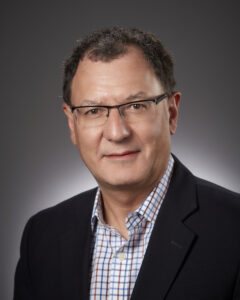
Carl is a Senior Vice President with Hatch Infrastructure, based in Ontario, Canada. He is currently the Chair of the Canadian Water & Wastewater Association’s Utility Leadership Committee and is regularly invited to moderate and participate in expert panels on subjects such as infrastructure funding, the value of water, sustainability and urban resiliency. Carl has over 35 years of experience in project management, engineering and planning for a wide range of projects in the water & wastewater, urban infrastructure and brownfield development, and power sectors.
Marianne Armstrong, National Research Council
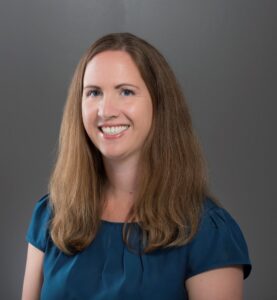
Marianne Armstrong is the Initiative Leader for the National Research Council of Canada’s Climate Resilient Built Environment Initiative. From 2016 to 2020, Marianne managed the Climate Resilient Buildings & Core Public Infrastructure Initiative to integrate climate resilience into Canadian building and infrastructure codes, standards and guidelines. This work built upon her rich research background relating to residential energy efficiency at the Canadian Centre for Housing technology, and to climate resilience of building envelopes with the NRC. After a 1-year stint as Director of Stakeholder Engagement and Management with Codes Canada, where she led the research program in support of Canada’s National Model Building Codes, Marianne has returned to her passion to define the next 5 years of research to support climate resilient buildings and infrastructure in Canada. Marianne is a member of the Professional Engineers of Ontario, holds a MSc in Industrial Design from University of New South Wales, Sydney, and a BSc in Mechanical Engineering from Queen’s University.
Laniel Bateman, Environment and Climate Change Canada

Laniel Bateman is the Director for Climate Change Adaptation and Resilience Policy at Environment and Climate Change Canada. She joined Environment Canada in 2003 and has worked on a broad range of files, primarily related to climate change and nature. Prior to joining the Government of Canada, she worked for an environmental non-government organization and in the private sector in wetland remediation. Laniel holds an Environmental Science degree from the University of Guelph.
Roy Brooke, Municipal Natural Assets Initiative
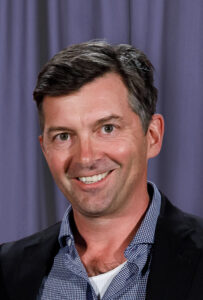
Roy is Executive Director of the Municipal Natural Assets Initiative (MNAI).
He served as Director of Sustainability for the City of Victoria between 2011-2013. Between 2003-2011 he worked for the United Nations, including the World Health Organization, United Nations Environment Programme and UN Office for the Coordination of Humanitarian Affairs. During his time with the UN he was based in Geneva, Switzerland, and later in Rwanda, where he was UNEP’s Environment Programme Coordinator. Prior to this he served as a political advisor to Canada’s environment minister.

CWWA is a non-profit national body representing the common interests of Canada’s public sector municipal water and wastewater services and their private sector suppliers and partners.
Head Office
CWWA, Unit 11, 1010 Polytek Street, Ottawa, ON K1J 9H9 Canada
(613) 747-0524
admin@cwwa.ca